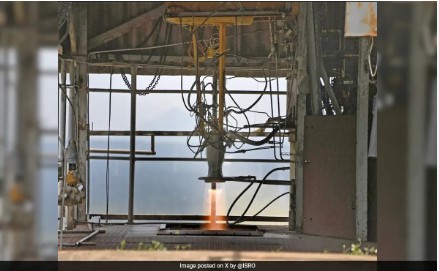Context:
The Indian Space Research Organisation (ISRO) recently successfully tested a 3D-printed liquid rocket engine called PS4.
Background:
- This Rocket is used in the fourth stage of the Polar Satellite Launch Vehicle (PSLV).
- The PS4 engine was produced using additive manufacturing technology, commonly known as 3D printing.
What is 3D printing?
- 3D printing is a process that builds three-dimensional objects layer by layer using computer-created designs.
- It’s an additive process, meaning materials like plastic, composites, or bio-materials are added layer by layer to create objects of various shapes, sizes, rigidity, and colors.
How does 3D printing work?
- A 3D printer, connected to a personal computer, creates objects based on a 3D model designed on computer-aided design (CAD) software.
- Unlike subtractive manufacturing methods (like sculpting from a block of marble), where the material is removed to create a shape, 3D printing adds material layer by layer.
- The printer uses a nozzle to dispense materials (like wax or plastic-like polymers) layer by layer, allowing each layer to dry before adding the next.
- It can print anything from simple objects like balls or spoons to complex moving parts like hinges and wheels.
Why did ISRO use 3D printing for the PS4 engine?
- ISRO adopted 3D printing to produce the PS4 engine to streamline production and improve efficiency.
- By using 3D printing, ISRO reduced the number of engine parts from 14 to a single piece, eliminating 19 weld joints.
- This technology also resulted in a 97% reduction in raw material usage and a 60% decrease in overall production time.
- The use of 3D printing allowed ISRO to optimize resources and enhance the performance of the engine for space missions.

